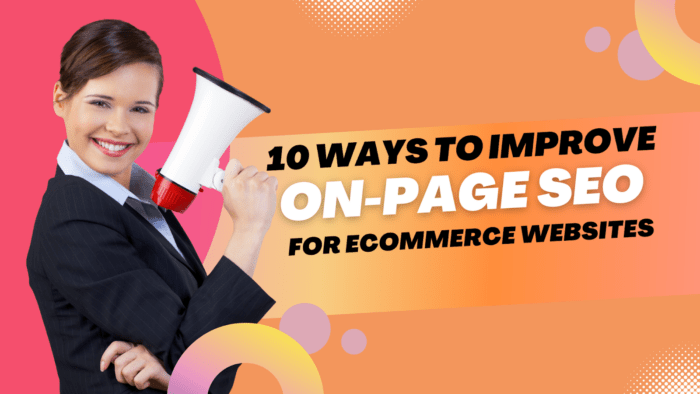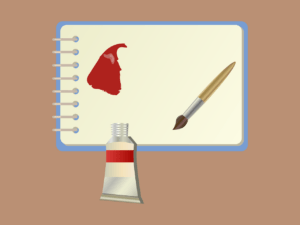10 Ways to Improve On-Page SEO for Ecommerce Websites

Many might consider featuring on the top of the search result page a task next to impossible. But it is not true. People saying so may not be aware of the effort required to rank higher on Google searches or simply do not believe it will work. Websites in today’s digital era need to put extra effort into making themselves visible to their target audience. The extra effort which has become essential for websites to rank higher can be the SEO Toronto strategy.
Having an online store or website is not enough; you need to have a well thorough SEO strategy that helps users find your product or services. Read this article till the end to know about the ways you can employ to improve your On-Page SEO strategy.
Let’s Begin!!
1. Content:
All the SEO effort starts with framing Content that answers the search query of a user online. The ultimate factor that decides whether the user will stick to your website or not is the Content. You want to make sure that your Content is able to provide information on a topic or product which the users are looking for. The Content of your website should be written in a structured way with short paragraphs and the use of bullet points. Ensure that your header tags and the intro part of the Content include the target keywords.
2. Backlinks:
They are defined as hyperlinks built on a third party website that directs users to another when clicked. You can understand backlinks as recommendations to your website from the third party website. It helps bring credibility and authority to the website. You might have guessed by now. A website having good authority tends to rank higher on the Google Search engine result page. So it becomes very crucial for websites to include backlinks in their In-page SEO strategy to rank higher on search engines.
3. Keyword Research:
How are you going to find out what exactly your audience is looking for when they search for a topic or product? Simple, with the help of keyword research. The aim of this research is to filter out keywords that your audience is using to satisfy their search intent. These keywords are then used to frame your Content which will help users find your website or web pages. You can do so by using Google’s LSI list or related searches to find out more about users’ search intent when they target a keyword.
4. Page Speed:
Page speed denotes the loading speed of your website in general. How much time your website takes to load indirectly decides the ranking of your website. How? A page that loads slowly will see users leaving the website, which signals to Google that something is wrong with this website. This will lead to Google lower the ranking of the website on its search result page. So, it becomes important to optimize websites for a fast loading speed.
5. Schema markup:
Schema markup is an HTML code that helps Google better understand the Content of your website. It helps Google provide better search results to its users. It creates ample opportunity for the websites. A search result such as schema will help the user find web pages and also similar ones easily. This will entice the users to click through to the website, which indirectly impacts the traffic coming to your website. It also spells a chance to convert the users visiting your website to paying customers.
6. URLs:
In the above URL types, the one that is SEO optimized is easy for the users to understand compared to the complex one. An SEO optimized URL helps Google understand the structure of your webpage. It also helps users to navigate through the website easily. So make sure that your URL is SEO optimized to provide a better user experience to your website visitors.
7. Featured Snippets:
It is a short text that appears at the top of Google’s SERP. The aim of the Featured snippet is to provide quick information to the user without having to open a website. It helps the websites as follows:
- Increases brand awareness among the people searching for the related product or topic.
- Present your website as an expert in front of the users.
- Boost the credibility and authority of your website.
- Make users click through your website.
8. Internal Linking:
Inter Linking is the process of linking your related web pages to each other. It is done to help Google better understand the structure of your website. When you interlink your web page to each other, it helps Google easily crawl and discover new web pages on your website. Other than this, it also provides value to the users looking to read more about any related topic on your website.
9. UX:
UX stands for User Experience. It is the feel that one gets while surfing through your website. A website that is unresponsive to the request of the user or is hard to navigate through will leave a bad impression in the minds of users. This will ultimately lead to users leaving the website, which is bad for websites aiming to rank higher on search engines.
10. Images:
You might agree that it is much easier to understand any topic with the help of images. Be it an infographic or a flow chart; it easily conveys the information to the users. The need to include images in your Content also becomes necessary to cater to the Google images query made by the users. Having featured in the Google Images search can help users click through your website to read more information on that topic.
Final Words!!
Remember, On-page SEO is an ongoing process. Track your website’s performance, analyze data, and make updates as needed.
By staying up-to-date with SEO best practices and refining your on-page optimization, you’ll position your website for long-term growth and success.





